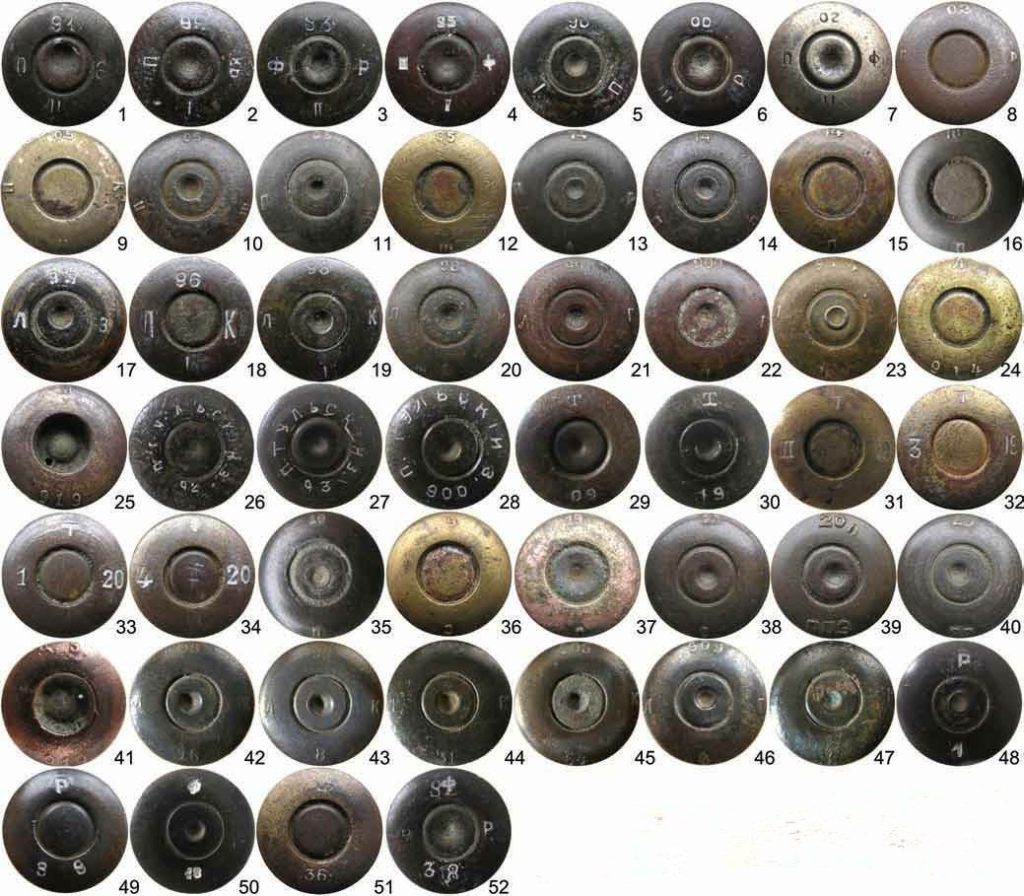Marking of three-line cartridge cases from the First World War (Identification of finds)
I’ve long wanted to dig into «Pervukha» — First World War. Once at one fair I saw a lot of copanina — bowler hats, sapper bombs, various grenades (even homemade ones from those times!). I think it will be especially useful for some diggers to understand the markings of cartridges at battle sites, this will make it clear in what time period (approximately) the battle took place here or in some other way will help in establishing events at the scene of the dig.

1-16 – issues of the St. Petersburg PZ 1891-1918. (7, 8 – the transition from the marking with a depressed imprint to a protruding imprint, 10, 11, 12 – the absence of a brass supplier code for 3 o’clock on these cases may have indicated that the brass used for the cases was produced by the brass-nickel silver factory, founded at PPZ, 13-15 – transition to a two-position marking system (year of manufacture and manufacturer), 16 – perhaps in 1918, cartridges were already produced at the Simbirsk Plant),
17-25 – release of Lugansk PZ 1895-1919
19, 20 — transition from marking with a depressed imprint to a protruding imprint,
20, 21 — change in the writing style of the manufacturer’s code L to distinguish it from cartridges produced by PPZ with the manufacturer’s code P, 23, 24 — transition to a two-position marking system),
26-34 – issues of the Tula PZ 1892-1920
(29 — transition to a two-position marking system,
31 – in 1919, the quarter of production of the sleeve was added to the marking),
35-38 – cartridges produced by Simbirsk PZ 1919-1920, 39-40 – cartridges produced by Podolsk PZ 1920,
41 — produced by the Volunteer Plant in 1919,
42-47 – non-standard markings on Lugansk PZ cartridges from the period 1898-1912: Arabic numerals are applied at 6 o’clock, instead of standard Roman numerals from I to III, indicating the period of release of the cartridge case. Perhaps the Arabic numbers on the LPZ cases indicated a non-standard alloy of case brass or experienced ones
variants of sleeve production technology,
48-52 – markings on the cartridge cases of three-line cartridges, consisting of the letters P or F and Arabic numerals. Perhaps such markings were applied to experimental cartridges or cartridges (52 – marking F 38 is applied over the standard marking F92 R III)
Well, let me hit the topic for you:

Comrades! I collect everything useful for identifying finds here — follow the link, and I have everything about the war here — just press . If you have anything to share or correct — let me know, I’ll add it! We are doing one thing, right?
